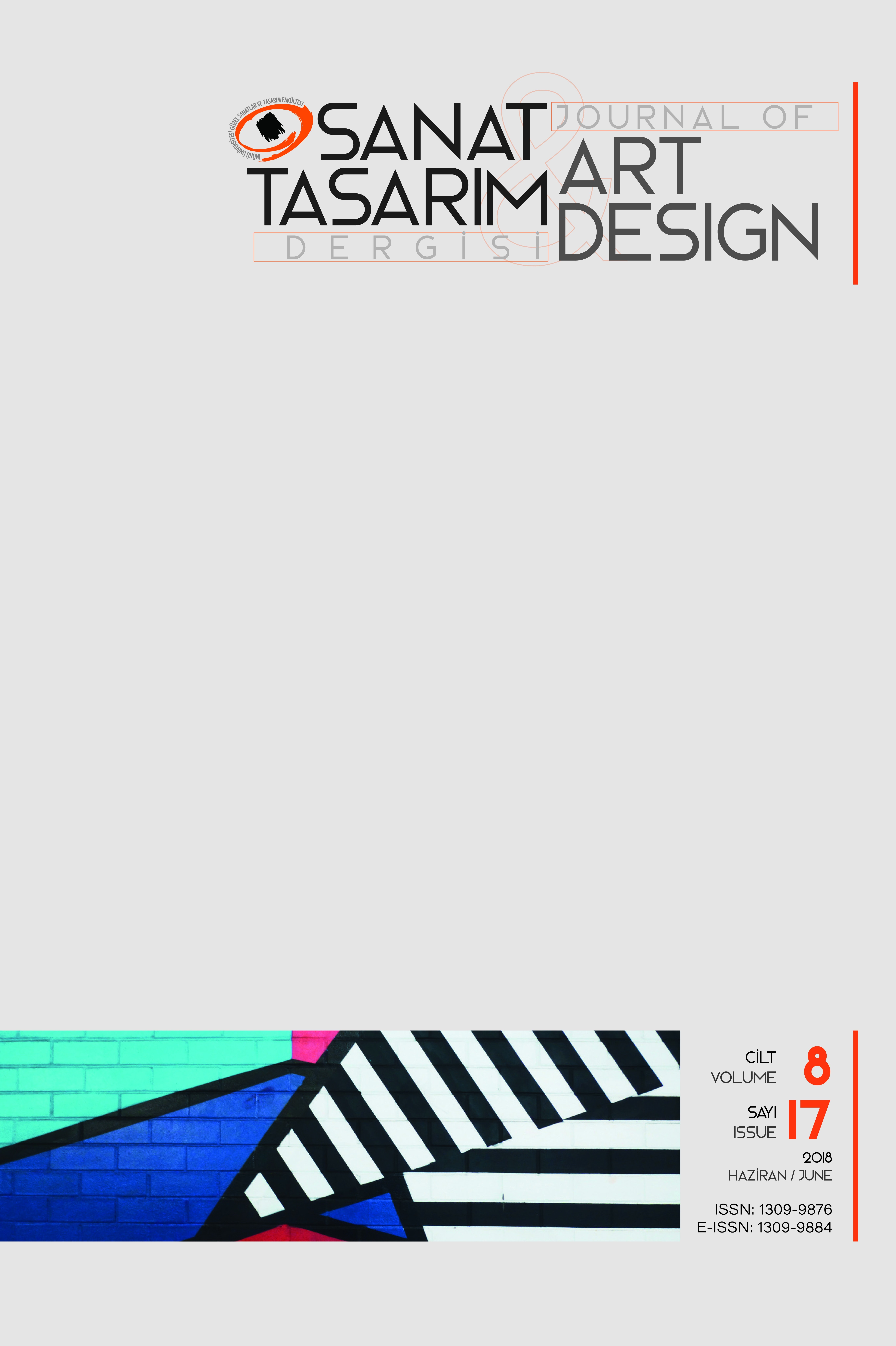Sokak Hayvanları İçin Yeni Umut: Taktiksel Kentleşme
Taktiksel kentleşme, Kayıp mekânlar, İnsan ihtiyaçları, Sokak hayvanları, Peyzaj Mimarlığı
New Hope for Stray Animals: Tactical Urbanism
Lost spaces, Tactical urbanism, Human needs, Stray animals, Landscape Architecture,
___
- Abdulkarim, A., Khan, M. G., & Aklilu, E. (2021). Stray animals population control: methods, public health concern, ethics and animal issues. World's veterinary journal, s. 319-326.
- Alekseevaa, I. V., Kaltsova, H. A., & Skavorodnikova, N. A. (2020). Formation of tactical urbanism by means of street art as the design-method. International science and technology conference 'Earth science', (s. 1-6).
- Aydoğdu, Ü. R., Karamustafaoğlu, O., & Bülbül, M. Ş. (2017). Akademik Araştırmalarda Araştırma Yöntemleri ile Örneklem İlişkisi:Doğrulayıcı döküman analizi örneği. Dicle Üniversitesi Ziya Gökalp Eğitim Fakültesi Dergisi, s. 556-565.
- Banner, S. M. (2013). Tactical urbanism: From civil disobedience to civic improvement. Master of science in community and regional planning.
- Bilgili, A. (2021). Sahipsiz hayvanların şehir, çevre ve halk sağlığı, hayvan sağlığı ve hayvan refahı yönünden kontrolünde bakanlıklar arası işbirliğinde karşılaşılan aksaklıklar ve çözüm önerileri. Icontech international journal of surveys, engineering, technology, 4(5), s. 33-43.
- Courage, C. (2013). The global phenomenon of tactical urbanism as an indicator of new forms of citizenship. Engage in visual arts, 1(32), s. 88-97.
- Elbeah, B., Abeer, E., & Toama, A. (2022). Tactical urbanism for improving livability in lost spaces of Cario. Advances in architecture, engineering and technology, s. 3-13.
- Ertaş, B., Sarı, G., Cebeci, B., İmren , A. K., Öztürk, S., & Tutuk , İ. (2022). Taktiksel kentleşme ve kentsel açık alan arakesitinde müşterek mekan:Kartal meydan parkı örneği. İdealkent, s. 2480-2519.
- Healey, P. (1998). Collaborative planning in a stakeholder society. Liverpool University(69), s. 1-21.
- Kaya, İ. A., & Görgün, E. K. (2017). Kentsel mekan üretiminde 'Kendin Yap' hareketi. TMMOB Şehir plancılar odası, s. 57-74.
- Kırışık, F., & Öztürk, K. (2021). Şiddet haberlerinden hayvan haklarına, sahipsiz köpek sorunu. Dumlupınar üniversitesi sosyal bilimler dergisi, s. 360-388.
- Kutluca, A. K., Olgun, İ., & Alay, M. A. (2022). Kamusal mekan tasarımını katılıma sunmak. TMMOB Şehir plancıları odası, s. 527-535.
- Leby, J. L., & Hasbim, A. H. (2010). Liveability dimensions and attributes: their relative importance in the eyes of neighbourhood resients. Journal of construction in developing countries, 1(15), s. 67-91.
- Messeidy, R. E. (2019). Tactical urbanism as an approach to reuse residual spaces. Engineering research journal(4), s. 41-47.
- Mowla, Q. A., & Ashrafuzzaman, A. (2014). Lost space to urban space. Bangladesh: Bangladesh University of engineering and technology.
- Ni, H. A., & Rahbarianyazd, R. (2013). Evaluation of urban lost spaces in terms of Responsive Environments: A case study ACPA, Famagusta, North Cyprus. Global Journal on Advances Pure and Applied Sciences 1, s. 278-285.
- Niazkar, N. (2014). The lost space of architecture in the contex of urban lost space. International journal of engineering and advanced technology, s. 311-321.
- Palmer, C. (2003). Placing animals in urban environment ethics. Journal of social philosophy, 1(34), s. 64-78.
- Poap, A. (2022). Greening strategies, participatory and liveability. Utrech University, Faculity of Geoscieince.
- Relph, E., & Sowers, J. (2008). Place and placessness. Human Geography, s. 43-51.
- Simpson, C. (2020). Tactical urbanism demonstration projects as community participation. Master thesis. University of Washington.
- Stevens, Q. (2009). 'Broken' public spaces in theory and in practice. Towm planning review, s. 371-391.
- Tarsitaro, E. (2006). Interaction Between the Environment and Animals in Urban. Environ manage, s. 799-809.
- Türkyılmaz, E., & Kizilkan, M. B. (2020). A conceptual idea for paticipatory design with BIM . Lisbon-Malacca part cities twin conferences, (s. 23-29).
- Yiğit, A., Aslım, G., & Can, H. (2020). Evaluation on shelter medicine and stray animal shalter in Turkey. Kafkas Üniversitesi Veterinelik Fakültesi Dergisi, s. 17-24.
- Yıldız, D., & Uzunsakal, E. (2018). Alan araştırmalarında güvenilirlik testlerinin karşılaştırılması ve tarımsal veriler üzerine bir uygulama. Uygulamalı sosyal Bilimler Dergisi, s. 14-28.
- URL-1 (2023) Vikipedi. (2023). tr.m.wikipedia.org adresinden alındı
- URL-2 (2023) https://www.nufusune.com/61789-samsun-atakum-mimarsinan-mahallesi-nufusu). (2023, Nisan 6).
- URL-3 (2023) https://tr.surveymonkey.com/mp/sample-size-calculator/. (2023, Nisan 6).
- URL-4 (2023)https://yunus.hacettepe.edu.tr/~yurdugul/3/indir/Kuresellik.pdf (2023,Nisan 6).
- ISSN: 1309-9876
- Başlangıç: 2011
- Yayıncı: İnönü Üniversitesi
Mimari Tasarımda Değişen İklim ve Küresel Isınmanın Rolü
Sokak Hayvanları İçin Yeni Umut: Taktiksel Kentleşme
Sosyal Ayrışmanın Kentsel Mekana Yansıması: Amasya’da Üç Kentsel Odak
Çocuk Dostu Restoranların Çocuk Gereksinmeleri Ölçeğinde İncelenmesi
Kentsel Sürdürülebilirliğin Geliştirilmesine Yönelik Yeşil Altyapı Uygulamaları
